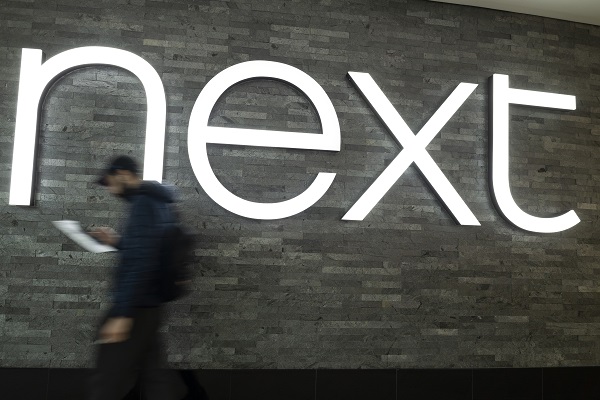Next urges caution on day FTSE 100 sinks to one-month low
4th May 2023 08:31
by Richard Hunter from interactive investor
Its first-quarter update was typically cautious, but what will 2023 really look like for the high street bellwether? Our head of markets also looks at the latest events affecting UK stocks.

In a brief but uninspiring trading update, Next (LSE:NXT) maintained its previous guidance for the year, but downgraded its forecast for the next quarter.
Sales are now expected to decline by 5% in the second quarter, compared to the group’s previous estimate of 4%, largely driven by strong comparatives, whereby last year saw the release of some pent-up demand alongside some unusually warm weather.
The guidance is in line with Next’s traditionally cautious outlook, adding to its previous comments that while it sees some improvement to the overall drag of inflation given reduced factory gate prices and lower freight costs, wage inflation and utility bills remain a thorn in the side which will likely impact overall performance.
- Learn more: SIPP Portfolio Ideas | How SIPPs Work | Transfer a SIPP
For this quarter, full-price sales dipped by 0.7%, better than the 2% decline Next had previously predicted. The improved result was largely driven by a rise of 7.4% in finance interest income, with online and retail sales dropping by 1.6% and 0.6% respectively. Sales overall increased by 1.2%, with higher clearance sales and an increase in holiday sales leading up to Easter proving to be something of a saving grace.
For the full year, Next is maintaining guidance for pre-tax profit of £795 million, which would mark a decline of 8.7% from the previous year, and for a drop of 1.5% for full-price sales, which nonetheless would represent growth of 18.7% compared to pre-pandemic levels.
A rebound over the last six months, partly following optimism over the group’s refreshed strategy as announced at its full-year results in March, has lifted the share price to stand ahead by 6% over the last year, as compared to a gain of 4% for the wider FTSE100.
The market consensus currently stands at a 'hold', albeit a strong one, but this dearth of any new positive catalysts is unlikely to put any positive pressure on the general view for now.
- ii view: Next now confident in generating long-term growth
- Shares for the future: how I would set up a new portfolio step by step
- Buffettology fund decides now is time to buy Next shares again
Market snapshot
As widely expected, the Federal Reserve raised interest rates by a further 0.25% late yesterday, which of itself was not market moving. Of rather more interest was the implication that the rate hiking cycle had now ended, even though the Fed remains poised to act again if necessary. At the same time, the Fed dampened expectations for any interest rate reductions in the immediate future, contrary to investor hopes that some kind of easing may follow before the end of the year, depending on the severity of any potential recession.
Indeed, the Fed seems to have switched into observational rather than action mode. Regional lenders in the US remain under pressure, and the lagged impact of a possible tightening of credit remains to be seen. Equally, while there have been some signs of a slowing economy in recent economic data, inflation remains a key sticking point. As such, the likelihood of the Fed sitting on its hands for the time being as further data emerges is now much higher.
In the meantime, the non-farm payrolls figure on Friday will provide the latest clue. The consensus is that 180,000 jobs will have been added in April, compared to 236,000 in March, with such a number playing to the narrative of a slightly cooling labour market.
Amid the complications of monetary policy and a first-quarter earnings season which has largely beaten expectations, albeit against extremely low expectations, markets are still holding up. In the year to date, the Dow Jones has added just 0.8%, although more resilient performances have come from the S&P500 and the Nasdaq, which are ahead by 6.6% and 15% respectively.
- 10 small-cap growth shares at cheap prices
- Insider: betting on a FTSE 250 bargain and FTSE 100 growth play
- Shares for the future: how I would set up a new portfolio step by step
The FTSE100 succumbed to the lack of any obvious global high spots in early trade, with a broad markdown partially offset by some strength from the oil majors following a positive reaction to Shell (LSE:SHEL)’s latest update and a subsequent read across to BP (LSE:BP.).
A smattering of stocks being marked ex-dividend also added to the downward pressure, with the main weakness coming from the mining sector, reflecting a more cautious approach from investors. The index fell as low at 7,739, a level not seen since 6 April. But despite the dip, the FTSE100 remains ahead by just over 4% in the year to date, again displaying its defensive rather than growth-driven attributes.
These articles are provided for information purposes only. Occasionally, an opinion about whether to buy or sell a specific investment may be provided by third parties. The content is not intended to be a personal recommendation to buy or sell any financial instrument or product, or to adopt any investment strategy as it is not provided based on an assessment of your investing knowledge and experience, your financial situation or your investment objectives. The value of your investments, and the income derived from them, may go down as well as up. You may not get back all the money that you invest. The investments referred to in this article may not be suitable for all investors, and if in doubt, an investor should seek advice from a qualified investment adviser.
Full performance can be found on the company or index summary page on the interactive investor website. Simply click on the company's or index name highlighted in the article.